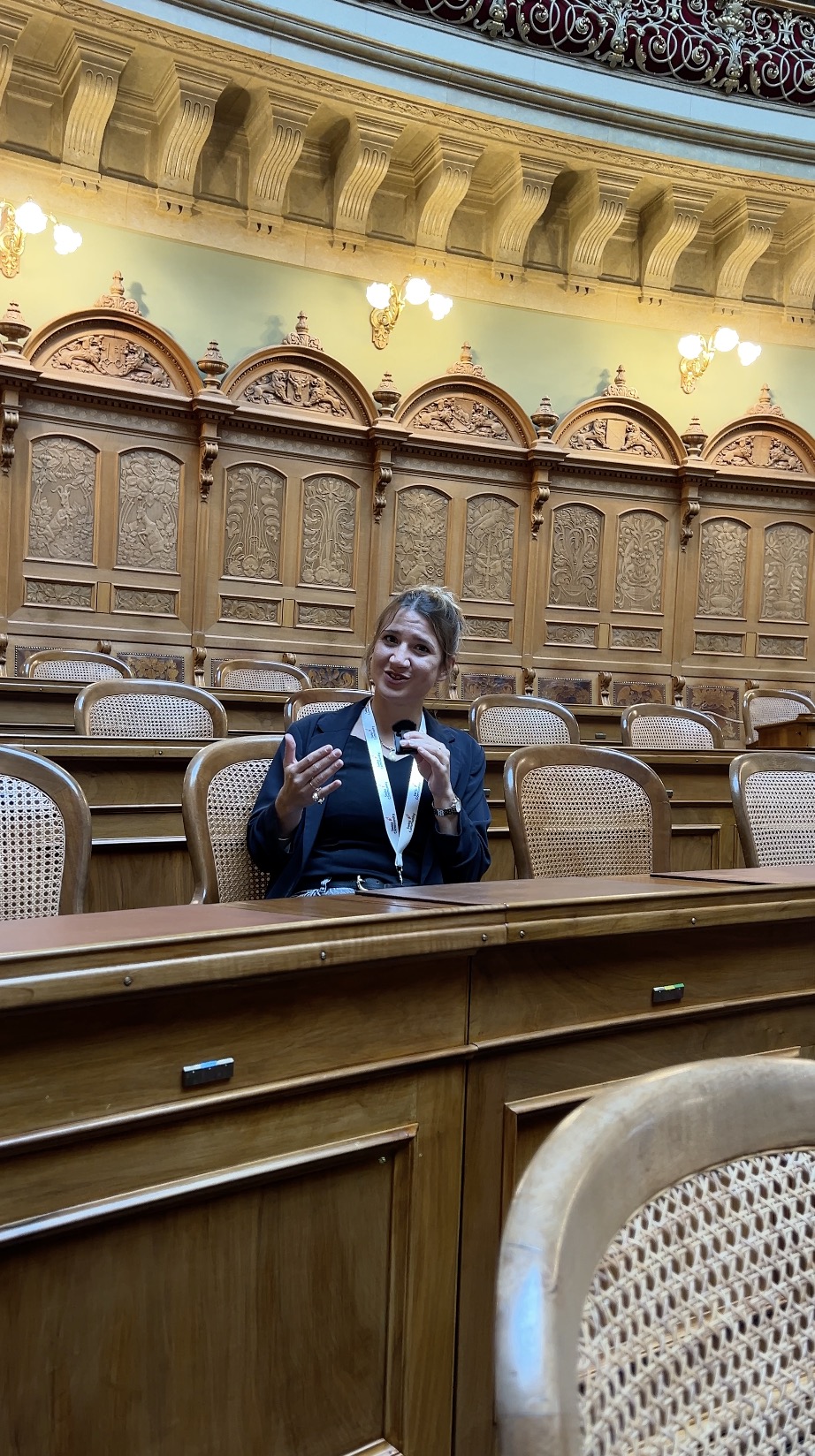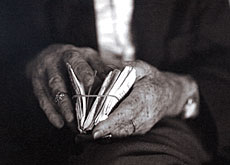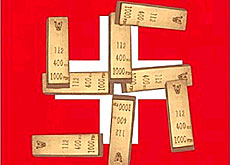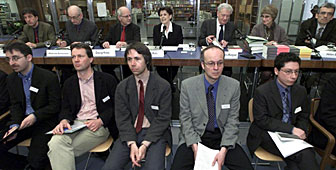
Eizenstat stands by his cover

A former US undersecretary of state, Stuart Eizenstat, has defended a controversial cover used on his book about Switzerland's wartime role.
In an exclusive interview with swissinfo’s Robert Brookes, Eizenstat said the cover – showing a Swiss flag covered with a swastika made of gold bars – accurately reflected history.
Eizenstat, who was the Clinton administration’s leader on Holocaust-era issues, said the cover of “Imperfect Justice” had been misinterpreted as an attack on Switzerland.
It upset the Swiss so much that the former foreign minister, Joseph Deiss, went so far as to explore whether it was legally possible to stop publication.
The book is far less controversial than its English-language cover. It describes in detail the struggle of Holocaust survivors to reclaim their assets, and focuses on the issue of dormant accounts.
In the second-half of the 1990s a campaign against Switzerland for failing to deal with its responsibilities resulted in a $1.25 billion settlement between Swiss banks and Jewish organisations.
In the middle of the high-stakes negotiations was Stuart Eizenstat.
How did you feel when the Swiss reacted so angrily to the cover of the book in English?
I was very hurt and pained by it because to me the cover had a very clear meaning, which was the role of the Swiss National Bank in accepting looted Nazi gold bars throughout the course of the war.
The fact that the cover was misinterpreted into some broad-based attack on either the country or the flag was for me very painful. I’ve had a very long-standing and positive relationship with Switzerland.
I am pleased that the new foreign minister, Micheline Calmy-Rey, has indicated that she feels the matter of the book cover is behind her.
I’ve done my best to explain what was meant. The German- and French- language versions of the book will have completely different covers and those Swiss journalists and others in Switzerland who’ve read the book and reviewed it have uniformly said that it’s fair and impartial.
But of course putting gold bars on top of a Swiss flag would obviously inflame the Swiss, wouldn’t it?
If people understood the purpose of it, it shouldn’t, because the gold bars are a symbol of the Swiss National Bank accepting looted gold throughout the war and refusing to return it afterwards.
But again, it’s been a hard lesson for me. And that is when you use a sensitive symbol, even if your own understanding of it is clear, one has to be sensitive to the fact that it can be subject to misinterpretation.
You’ve praised the historian Jean-François Bergier for his report on Switzerland’s wartime past. But even he says your book cover is “wrong and outrageous” because it suggests that Switzerland was the Nazi’s accomplice.
The fact is that Switzerland had a very mixed role during the war and perhaps it’s time for the Swiss people to come to terms with that…
According to the Bergier report, Switzerland repeatedly violated its own neutrality. It did so by shipping arms to Germany, by having its companies employ slave labour, by putting a “J” stamp on visas that prevented Jewish refugees from coming into the country and most important by accepting what it knew to be looted gold bars from the countries that were occupied…
To me the meaning is very clear. I’m sorry if Mr Bergier has a different opinion.
I respect his work and indeed I think the most important thing is for people to read the book and read the Bergier report and then come to terms with their own history. I think in some respects that Switzerland has begun to do that.
You have harsh words in your book about what you call the “passivity” of the Swiss government over the whole dormant accounts issue. Why do you say that?
Of all the major negotiations that I had with Switzerland, with Germany, Austria and France, the Swiss bank affair was the only one in which the government itself refused to negotiate.
In all the other cases, the German government negotiated with its private sector, the French did the same, and each of those governments made substantial contributions to the settlement of the class action suits.
In the Swiss case, the private Swiss banks were left with the full burden of paying the settlement of $1.25 billion. Frankly I think much of the criticism of Switzerland during the war can be directed not at the private banks, which were not permitted to take gold, but at the Swiss National Bank, which contributed nothing to the settlement and neither did the government.
Even after the settlement was achieved in August 1998, the agreement was never formally blessed by the entire Swiss government.
In the whole issue of the Holocaust, there’s still much to be done, you say. Perhaps you can explain what has to be done?
There is much to be done and frankly most of that is occurring outside Switzerland and not inside. For example there is still a tremendous amount of confiscated communal property – synagogues, churches, schools, community centres, even cemeteries in Eastern Europe – which have yet to be returned to the religious communities, and in particular the Jewish communities…
Second, there is a great deal to be done in terms of art restitution in the United States, Germany and in particular in Russia. Russia holds the greatest treasure trove of looted art, which the Red Army took. They’ve made a lot of progress agreeing to return that but we’re still not yet seeing that art return.
Next is Holocaust education. There are 16 countries, from Sweden to Poland, France to Germany, and the United States, which are trying to encourage more Holocaust education in school systems. Not as a way of looking back at a morbid past but at the lessons of the Holocaust.
I think these are all areas where progress needs to be made.
swissinfo interview: Robert Brookes in Washington
Stuart Eizenstat has held a number of key positions during his decade and a half of government service.
Among others, he was the Clinton administration’s leader on Holocaust-related issues as Special Representative of the President and Secretary of State.
He helped negotiate major agreements with the Swiss, Germany, Austrians and French.
He is now a partner in the international law firm, Covington and Burling, in Washington DC.
Author Stuart Eizenstat said he was “very pained and hurt” by the Swiss reaction to the cover of his book.
He says the cover was misinterpreted and he does not single out the Swiss.
Eizenstat says that perhaps it is time for the Swiss to come to terms with their “mixed past” and with the Bergier report.
He says that the rejection of the Swiss Solidarity Foundation was one indication of the difficulty Switzerland faced with coming to terms with its history.

In compliance with the JTI standards
More: SWI swissinfo.ch certified by the Journalism Trust Initiative












































You can find an overview of ongoing debates with our journalists here . Please join us!
If you want to start a conversation about a topic raised in this article or want to report factual errors, email us at english@swissinfo.ch.